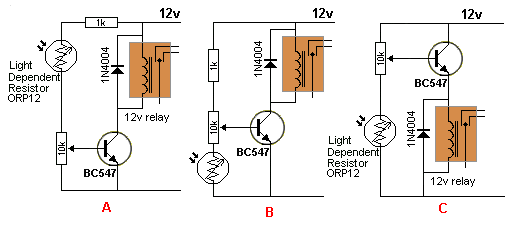Mike just before I leave this ,for another application I have in mind , what would be involved in making one that turned on with the light and off with the dark?.
The opposite of this?
I was stewing over something that draws power only during the daylight hours as a solar installation would be suited to putting power to use as made rather than storing it in the battery and losing some before it gets used at night.
The opposite of this?
I was stewing over something that draws power only during the daylight hours as a solar installation would be suited to putting power to use as made rather than storing it in the battery and losing some before it gets used at night.



